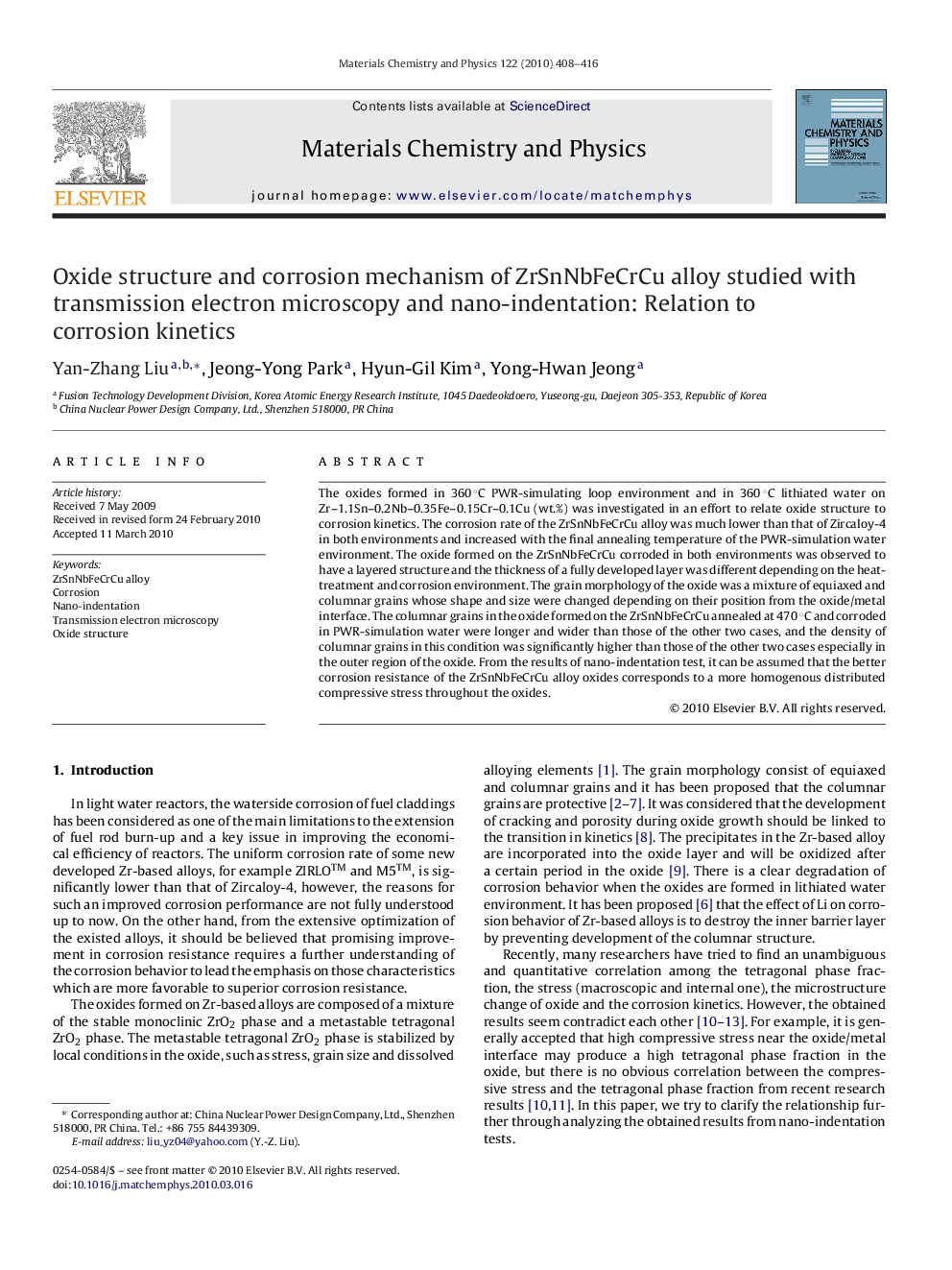| Article ID | Journal | Published Year | Pages | File Type |
|---|---|---|---|---|
| 1525277 | Materials Chemistry and Physics | 2010 | 9 Pages |
The oxides formed in 360 °C PWR-simulating loop environment and in 360 °C lithiated water on Zr–1.1Sn–0.2Nb–0.35Fe–0.15Cr–0.1Cu (wt.%) was investigated in an effort to relate oxide structure to corrosion kinetics. The corrosion rate of the ZrSnNbFeCrCu alloy was much lower than that of Zircaloy-4 in both environments and increased with the final annealing temperature of the PWR-simulation water environment. The oxide formed on the ZrSnNbFeCrCu corroded in both environments was observed to have a layered structure and the thickness of a fully developed layer was different depending on the heat-treatment and corrosion environment. The grain morphology of the oxide was a mixture of equiaxed and columnar grains whose shape and size were changed depending on their position from the oxide/metal interface. The columnar grains in the oxide formed on the ZrSnNbFeCrCu annealed at 470 °C and corroded in PWR-simulation water were longer and wider than those of the other two cases, and the density of columnar grains in this condition was significantly higher than those of the other two cases especially in the outer region of the oxide. From the results of nano-indentation test, it can be assumed that the better corrosion resistance of the ZrSnNbFeCrCu alloy oxides corresponds to a more homogenous distributed compressive stress throughout the oxides.
